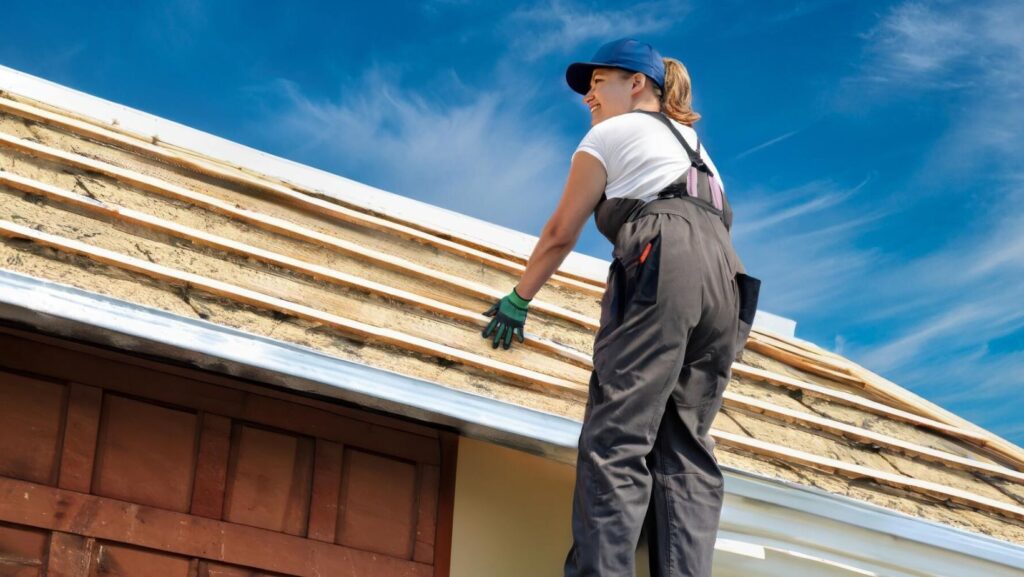Whether upgrading from an old, worn-out roof or completing new construction, proper preparation is crucial for a smooth and successful installation process. Taking the time to prepare your home and ensuring you’re ready for the roofing crew will make the process more efficient and less stressful. This post explores the essential steps you need to take before your new roof is installed to ensure everything goes as planned.
Choose the Right Roofing Contractor
The first and most crucial step in preparing to install a new roof is selecting a reliable, experienced roofing contractor. Start by researching local roofing contractors. Request multiple quotes and ask each contractor about their experience, insurance coverage, warranties, and the materials they work with. Verify that your chosen contractor is licensed, insured, and bonded. This will protect you in the event of accidents or damages during the project. Ensure that you receive a detailed written estimate before the roof installation begins. The estimate should include materials, labor, permits, and additional charges. Choosing the right contractor sets the foundation for a smooth installation and helps ensure your new roof lasts for years.
Clear the Area Around Your Home
It’s essential to clear the area around your home to protect your belongings and make space for the roofing crew. Park your cars, bikes, and other vehicles away from the house or in a garage (if possible). Roofing materials, debris, and equipment can fall from the roof, potentially causing damage. Keeping your vehicles at a safe distance ensures they remain protected during the installation. Move patio furniture, grills, potted plants, and other outdoor items away from the house. If you have fragile items like garden decorations or lighting fixtures, store them indoors or in a shed. Roofing debris can easily damage outdoor items, so it’s best to clear the area thoroughly.
Prepare the Inside of Your Home
While most of the roofing work happens outside, the installation process can also affect the inside of your home. Taking a few indoor precautions can minimize disruptions and protect your belongings. Vibrations from hammering and the movement of heavy materials on the roof can cause items inside your home to shift or fall. Remove valuable or fragile items from shelves, walls, and other areas where they could be damaged. This includes artwork, mirrors, and decorative items.
Protect your furniture, floors, and any exposed surfaces by covering them with drop cloths, old sheets, or plastic tarps. This is especially important if any part of the roof or ceiling will be replaced or repaired from the inside. Make arrangements to stay elsewhere during the installation, primarily if you work from home or have young children or pets who may be stressed by the noise. By taking these steps, you can protect your belongings and minimize the impact of the installation on your daily life.
Make Arrangements for Children and Pets
Installing a roof is a noisy and chaotic process that can be stressful for children and pets. For their safety and comfort, planning and making arrangements to keep them away from the work zone is essential. If your children will be home during the installation, make sure they stay indoors and away from any construction areas.
The roofing crew will be working with heavy materials and tools, and debris may fall from the roof, posing a risk to anyone nearby. Pets can be susceptible to loud noises and unfamiliar activity around the home. Keep them indoors in a quiet room where they can feel safe and comfortable. Ensuring the safety and comfort of your children and pets is a critical step in preparing for your new roof.
Discuss Waste Removal with Your Contractor
Roofing projects generate a lot of debris, from old shingles and roofing materials to nails and packaging. It’s essential to have a waste removal plan in place before the project begins. Talk to your contractor about how debris will be handled. Most roofing companies will bring a dumpster or large container to collect and dispose of old roofing materials. Ensure there’s enough space for the dumpster, and ask about the timeline for its removal after the project is complete.
Roofing debris can damage your lawn, driveway, and surrounding areas. Many contractors use plywood or tarps to protect surfaces from falling debris and heavy equipment. A clear waste removal plan ensures that your property remains clean and safe throughout installation.
Check the Roofing Timeline
The installation times vary depending on factors like the size of your roof, the type of materials used, and weather conditions. Ask your contractor for an estimated timeline, including when the crew will arrive, how long the project is expected to take, and any potential delays due to weather or other factors. Once you have an estimated timeline, plan your activities accordingly. Being aware of the timeline allows you to plan and minimize any inconvenience during the project.
Preparing for a new roof involves more than just hiring a contractor and choosing materials. By clearing your property, protecting your home’s interior, and making arrangements for pets and children, you can help ensure a smooth and stress-free installation process. With proper planning and clear communication with your roofing contractor, your new roof will be installed efficiently, providing long-lasting protection and enhancing the value of your home.




More Stories
Why You Should Invest In Professional Scaffolding Services?
Maximizing Space and Functionality: The Ultimate Guide to Garage Building
The Importance of Quality Siding in MA